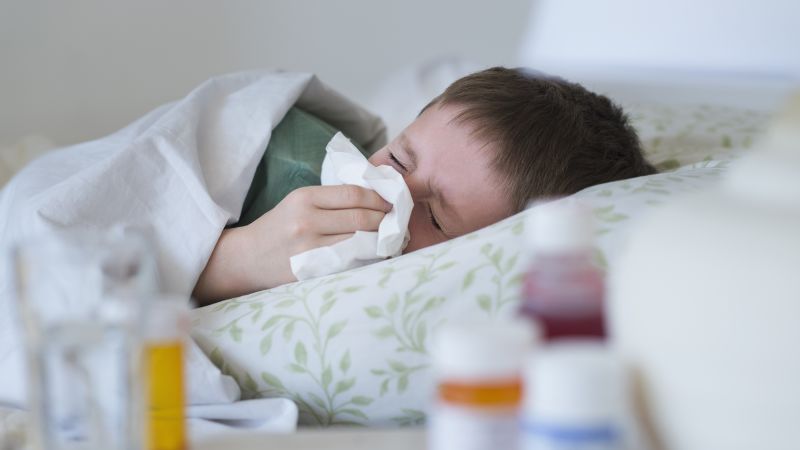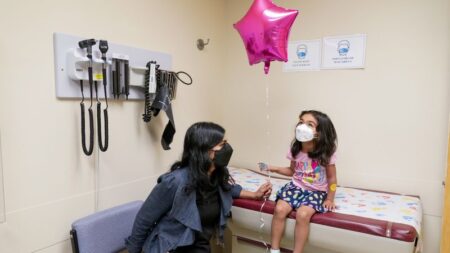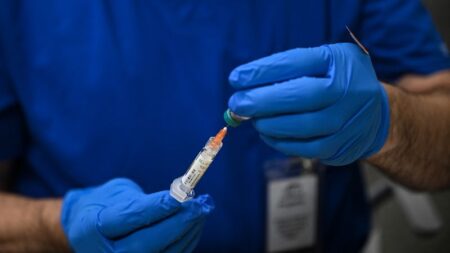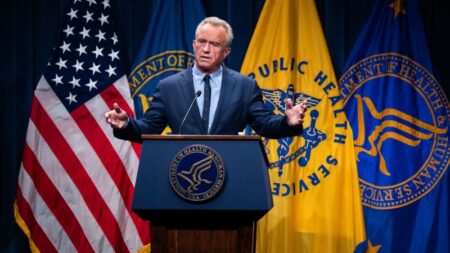The respiratory disease season is unfolding with challenges that could potentially endanger the health of many children across the United States. As experts are observing a worrying combination of low vaccination rates amidst an uptick in certain illnesses, there is heightened concern regarding the well-being of pediatric patients. Children are already at increased risk due to the rapid spread of respiratory diseases, even in the early stages of this season. Cumulatively, these factors underscore the necessity of protective measures during the respiratory season.
According to the US Centers for Disease Control and Prevention (CDC), while this year’s respiratory disease season may resemble the previous one, the forecasts hint at a situation that could yield hospitalizations at levels significantly surpassing the typical benchmarks witnessed prior to the Covid-19 pandemic. Despite indications that Covid-19 cases in the US are at their lowest levels since the beginning of the pandemic, data from early December reveals a concerning trend. Hospital visits prompted by influenza and respiratory syncytial virus (RSV) are on the rise, leading to fears of an impending surge as we approach the holiday season.
Historically, Dr. Andy Pekosz, a respected virologist from the Johns Hopkins Bloomberg School of Public Health, notes that an uptick in respiratory disease cases usually follows the Thanksgiving holiday. The speed of the rise in cases from Thanksgiving to Christmas will give a clearer assessment of how severe this season could become. The CDC is particularly mindful of potential new variants of Covid-19 as they assess the anticipated respiratory disease season, emphasizing that vaccination against flu, Covid-19, and RSV is vital in mitigating hospitalizations.
Unfortunately, vaccination rates remain alarmingly low, with less than 20 percent of adults and approximately eight percent of children having received the updated Covid-19 vaccination this season. Additionally, survey data from the Pew Research Center highlights that about 60 percent of adults are not planning to receive the updated Covid-19 shot, primarily due to concerns about need and possible side effects. The situation with flu vaccinations is not much better, with only about 37 percent of adults and 33 percent of children having gotten their flu shots so far this season, reflecting a notable decrease compared to the previous years.
Elizabeth Choma, a pediatric nurse practitioner, underscores the significant protective role vaccines play in lessening the severity of illnesses, even if they do not completely preempt infections. The gravity of the situation is particularly pronounced in the context of flu-related deaths, most of which occur in unvaccinated children. The unique physiological aspects of children’s respiratory systems add another layer of risk, as infants and young children have smaller airways that can easily become inflamed, leading to increased distress during respiratory illnesses.
Data points to a significant increase in RSV infections, which typically manifest mildly in adults but can have severe implications for infants and older adults. Alarmingly, hospitalization rates for RSV among children have doubled in recent weeks. The CDC is witnessing a concerning trend with rising cases of walking pneumonia, predominantly affecting younger children, placing additional strain on pediatric healthcare facilities.
This strain is exemplified at institutions like Cook Children’s Medical Center in Fort Worth, Texas, which is facing near-capacity conditions due to rising hospitalizations from RSV and pneumonia. In central Virginia, pediatric pneumonia cases requiring hospitalization have notably surged. According to Dr. David Marcello from Children’s Hospital of Richmond at Virginia Commonwealth University, there is concern that conditions like pollen and mold with the onset of colder weather will exacerbate the issue further.
Dr. Torey Mack, the Chief Medical Officer for the Children’s Hospital Association, emphasizes that children’s hospitals are preparing for expected surges during this time of year, ensuring they are staffed with specialists to manage the needs of severely impacted children. Despite these preparations, ensuring that pediatric patients receive timely access to care and expertise remains a paramount concern as the respiratory disease season progresses.












